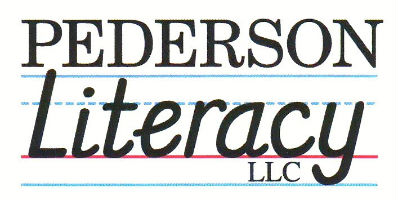I am doing a lot of journal reading these days on the topic of fluency as I continue to design an online course on the topic. A couple of articles I ran across recently reminded me of a couple of principles of learning that I ran into earlier in my career. First, it is important for the learner to know the components of a learning task. In the Cahill and Gregory article, the importance of defining the skill and the steps needed to develop it reminds me of my introduction to group sports in high school phy ed classes that stressed specific rules of the game – different from the less structured activities in earlier years. Lacking a clear understanding of the task, perfecting it was a challenge! Second, fluency goals should include comprehension as well as the speed, accuracy, and prosody. It is reasonable to expect stronger comprehension with increased fluency, but that does not always occur without some special planning and attention. The Wilson article presents important steps to include in the fluency lesson. While all steps will make contributions to reading comprehension, she includes more specifics in a small group lesson that focuses specifically on ways of increasing understanding. While readers are engaged in reading, giving more attention on the critical comprehension process is important.
Putting the Fun Back into Fluency Instruction by Mary Ann Cahill and Anne E. Gregory
Cahill and Gregory remind the reader of the importance of informing the young readers of what “fluency” is by first teaching students to observe varying models of reading aloud followed by discussions and student-created definitions of fluency. Models of fluency instruction are described which stress good modeling, guided practice during which errors are corrected, and repeated readings which provide additional practice with speed and expression. A student-created fluency measure is also shared in this article. This article has good ideas for the classroom teacher, reading tutor, and parents.
SOURCE: Cahill, M. A. & Gregory, A. E. (2011). Putting the fun back into fluency instruction. The Reading Teacher, 65,(2), 127–131 DOI:10.1002/TRTR.01018 (This journal is published by the International Reading Association.)
Brisk and Effective Fluency Instruction for Small Groups by Judith K. Wilson
This article reviews the basic concepts underlying the process of reading fluency and presents several excellent ideas that can be easily implemented in the classroom. It includes steps to ensure reading comprehension is practiced as well as a focus on selecting key words based on decoding and vocabulary development. I liked the reminder to use slashes in identifying phrase units and the idea to use a variety of voices or expressions when reading. Interesting resources that are available as free downloads are always welcomed. Several are included that cover a variety of genre.
SOURCE: Wilson, J. K. (2011). Brisk and Effective Fluency Instruction for Small Groups Intervention in School and Clinic first published on October 7, 2011 as doi:10.1177/1053451211423817 (This journal is published by Sage Publishers and is also available through the Counsel for Learning Disabilities.)
